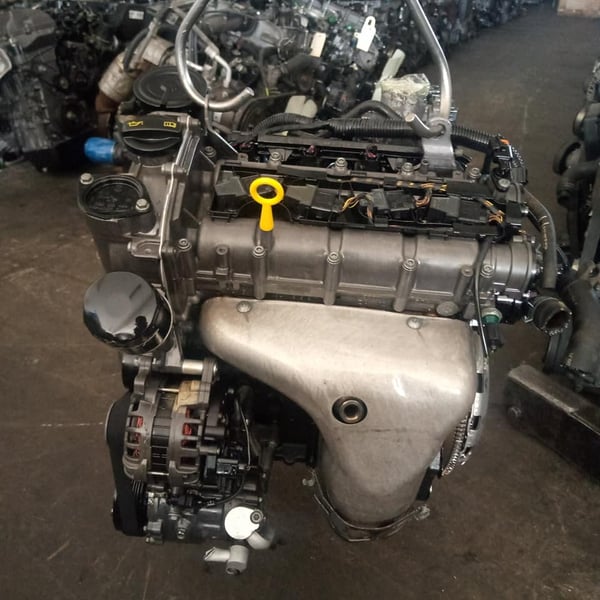Enhance productivity with a powerful clp engine.
Enhance productivity with a powerful clp engine.
Blog Article
Just How a Clp Engine Can Boost Effectiveness in Numerous Industries
The introduction of CLP engines marks a substantial change in operational efficiency across numerous sectors, driven by their capacity to maximize fuel intake and lessen downtime. Industries such as production and logistics stand to get considerably from their durable style and regular power outcome, which promise to improve procedures and enhance efficiency. As organizations progressively prioritize sustainability together with effectiveness, the role of CLP engines comes to be a lot more critical. What stays to be seen is how these advancements will shape the future landscape of industrial operations and their effect on wider economic patterns (clp engine).
Summary of CLP Engines
CLP engines, or Continuous Fluid Propellant engines, stand for a considerable innovation in propulsion innovation, especially for room applications. These engines use a continuous feed system that permits the continual expulsion of propellant, bring about boosted effectiveness and efficiency contrasted to traditional solid or hybrid propulsion systems. By preserving a continuous flow of liquid propellant, CLP engines can accomplish a lot more exact thrust control, which is important for navigating spacecraft in different goal scenarios.
The style of CLP engines incorporates innovative products and cutting-edge fuel administration systems. clp engine. This results in reduced weight and enhanced reliability, important aspects for long-duration space goals. The continual procedure reduces the risk of combustion instability, an usual obstacle in conventional rocket engines.

Benefits in Production
The manufacturing of Continuous Fluid Propellant (CLP) engines provides a number of noteworthy advantages that boost both efficiency and cost-effectiveness. One of the key advantages is the structured manufacturing process, which reduces the complexity connected with typical propulsion systems. By using fluid propellant, manufacturers can attain higher precision in engine performance, causing optimized energy output and lowered waste.
In addition, CLP engines promote a higher level of modularity, permitting much easier combination into numerous production lines. This adaptability can significantly decrease preparations and enhance overall functional adaptability. Making use of CLP technology also often tends to lessen the need for substantial upkeep as a result of fewer relocating components, which translates into minimized downtime and functional prices.

Applications in Logistics
Leveraging Continual Fluid Propellant (CLP) engines in logistics supplies significant benefits in operational efficiency and dependability. These engines offer a robust option for various transportation needs, enabling the seamless motion of products throughout huge distances. The integral style of CLP engines permits for consistent power outcome, which translates right into smoother and more predictable transportation routines.
One of the crucial applications of CLP engines in logistics remains in heavy-duty freight transportation, where they can drive both ground and airborne vehicles. Their capacity to preserve high efficiency under differing lots conditions ensures that delivery timelines are satisfied, consequently improving customer contentment. In addition, CLP engines can be integrated right into automated logistics systems, promoting real-time monitoring and maximizing route planning.
Furthermore, the sturdiness of CLP engines minimizes upkeep downtime, permitting logistics companies to maximize their functional capabilities. This is particularly advantageous in warehousing operations, where performance in dealing with and transferring items is critical. As logistics continues to advance, the assimilation of CLP engines stands for a forward-thinking approach that not just improves performance however also sustains the sector's expanding needs for dependability and rate.
Effect on Power Performance
Just How do Continual Fluid Propellant (CLP) engines improve power performance in transportation? CLP engines use a consistent circulation of fluid gas, maximizing combustion procedures and keeping a secure drive result. This layout decreases energy losses linked with typical combustion engines, where fuel delivery can vary and result in ineffectiveness.
The continual operation of CLP engines permits for a more reliable thermal cycle, resulting in greater particular impulse contrasted to conventional engines. clp engine. This equates to reduced fuel consumption for the very same quantity of work done, substantially lowering operational prices across various transportation markets, consisting of aeronautics and maritime markets
In addition, company website the capacity of CLP engines to preserve optimal performance under differing tons problems minimizes the demand for constant acceleration and slowdown, further boosting gas effectiveness. Improved energy effectiveness not just adds to cost savings yet additionally leads to decrease greenhouse gas emissions, aligning with international sustainability goals.
Future Trends and Innovations
Emerging developments in Constant Liquid Propellant (CLP) engine technology guarantee to transform the landscape of transport effectiveness and sustainability. As markets pivot towards greener alternatives, CLP engines you can check here stand at the leading edge, integrating cutting-edge products and layout methodologies that improve performance while lessening environmental influence.
One of one of the most promising fads is the adoption of crossbreed systems that integrate CLP engines with eco-friendly power sources. This harmony can optimize gas intake and minimize exhausts, straightening with global sustainability goals. In addition, innovations in computational liquid characteristics (CFD) are helping with the style of more aerodynamically reliable engines, bring about reduced drag and boosted gas performance.
In addition, the development of smart surveillance systems is set to boost operational performances. These systems leverage data analytics and IoT innovation to enhance engine efficiency in real-time, making certain that the engines operate within their most effective specifications.
As study remains to explore look at this site alternate propellant solutions-- such as biofuels and synthetic gas-- the future of CLP engines looks appealing. By harnessing these technologies, sectors can not just enhance their efficiency but also contribute significantly to a cleaner, extra sustainable future in transport.
Verdict
To conclude, CLP engines represent a significant development in performance throughout several sectors. Their capability to optimize gas consumption and reduce functional prices, combined with a continuous feed system, boosts power outcome and functional integrity. The assimilation of innovative products and less relocating components lessens maintenance needs, while placement with sustainability goals settings CLP engines as a critical innovation for the future. Proceeded development in this area promises additional enhancements in performance and ecological performance.
Report this page